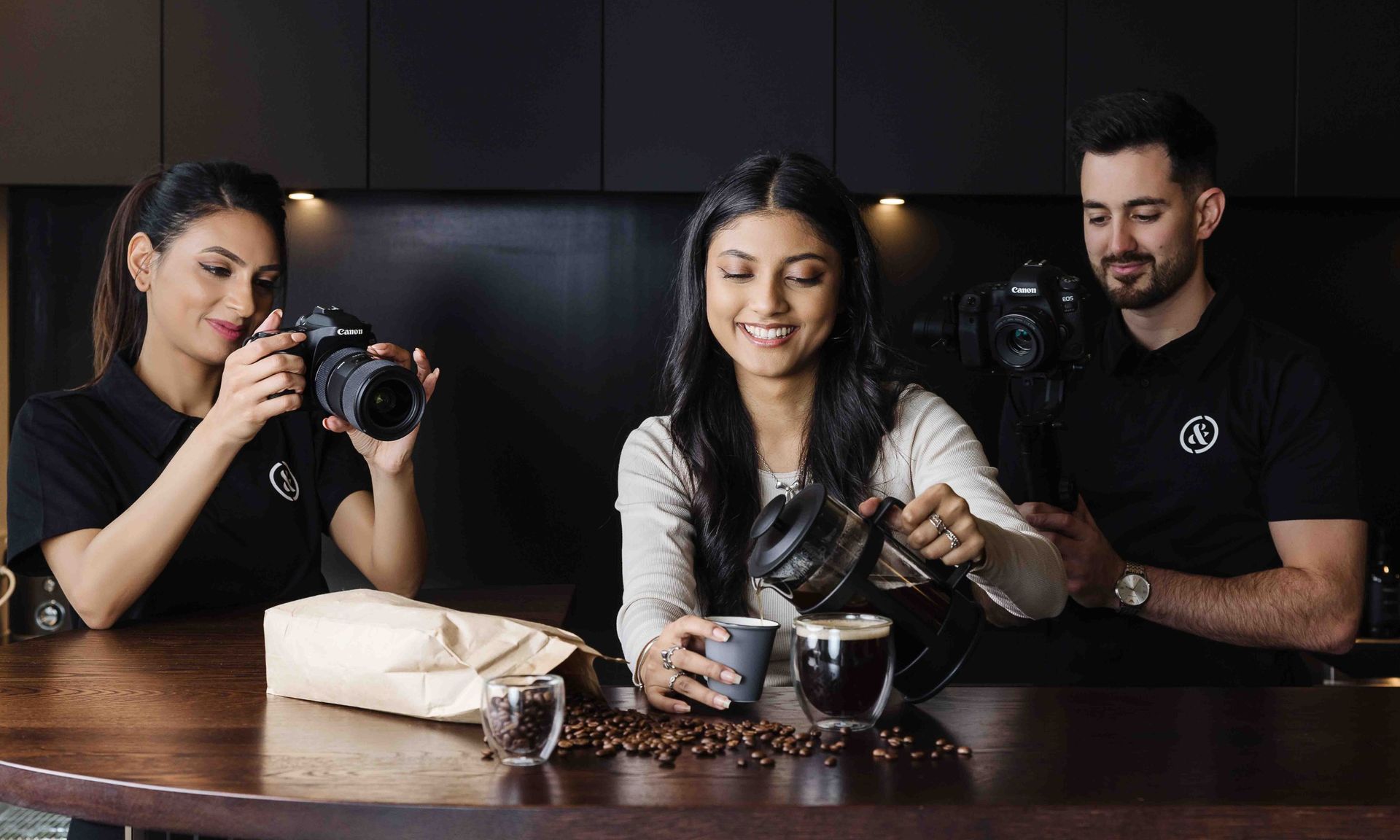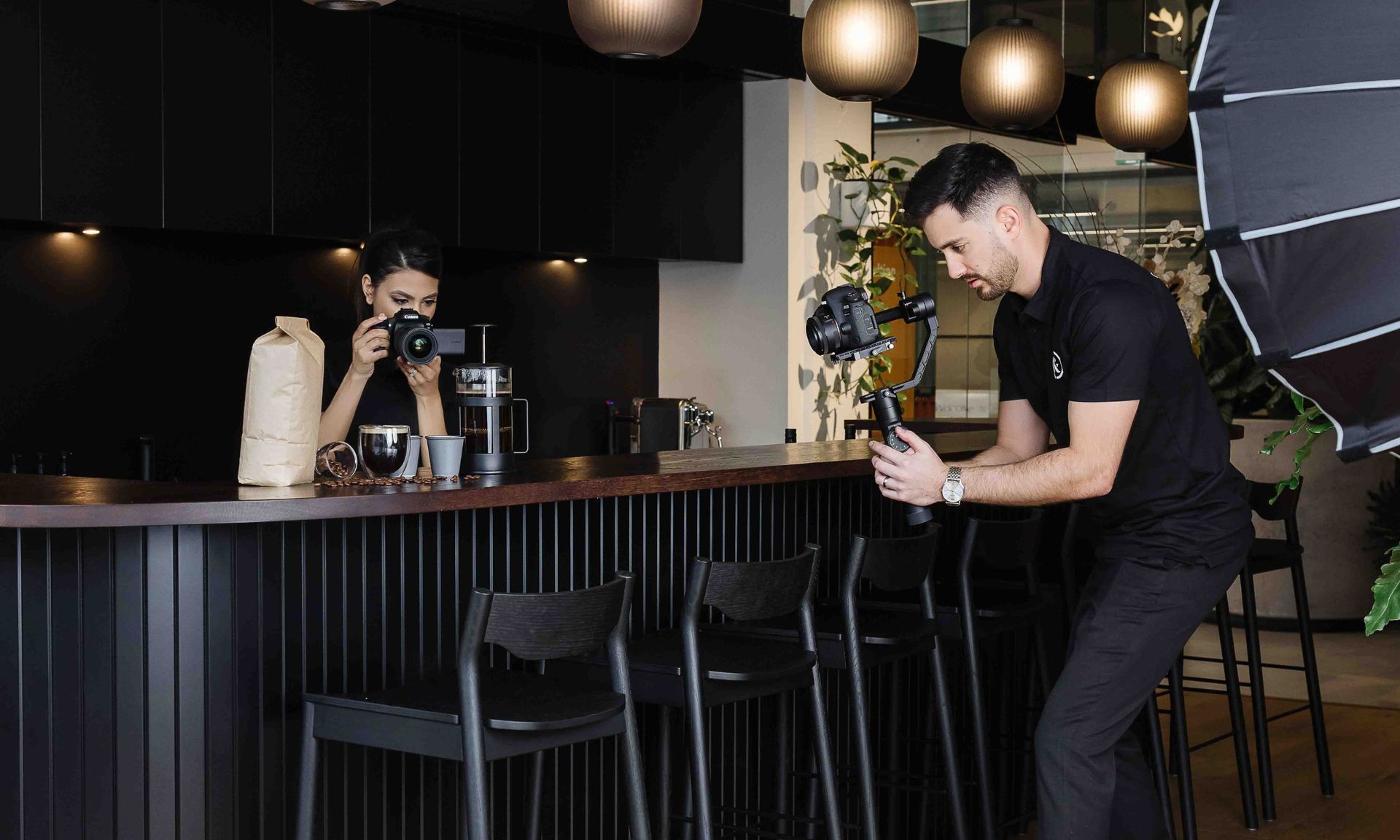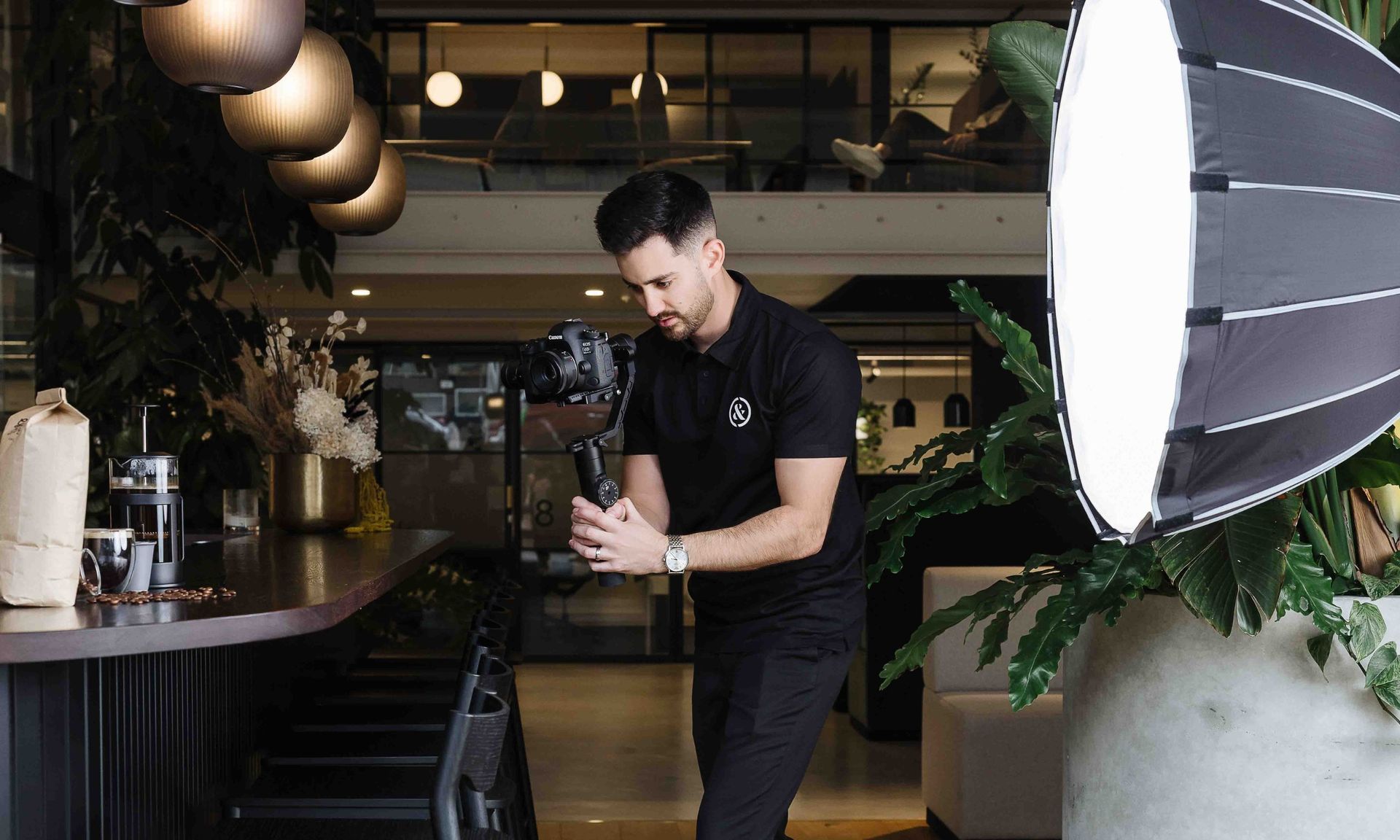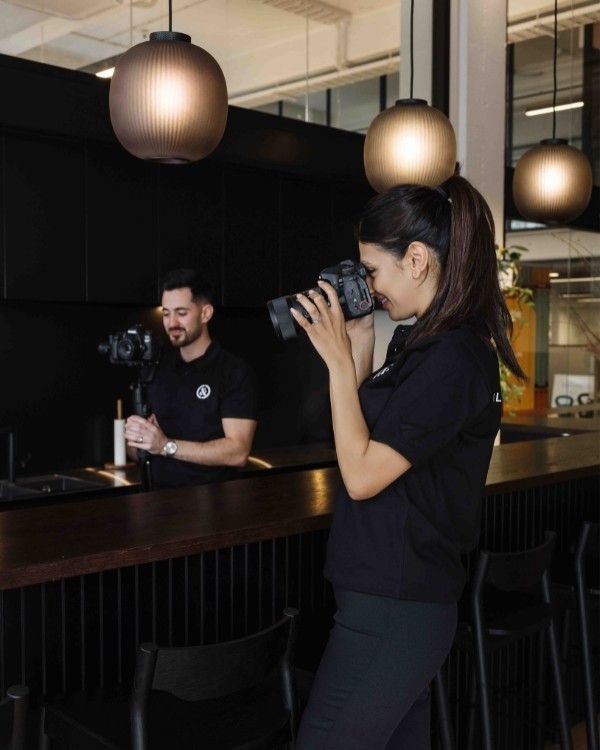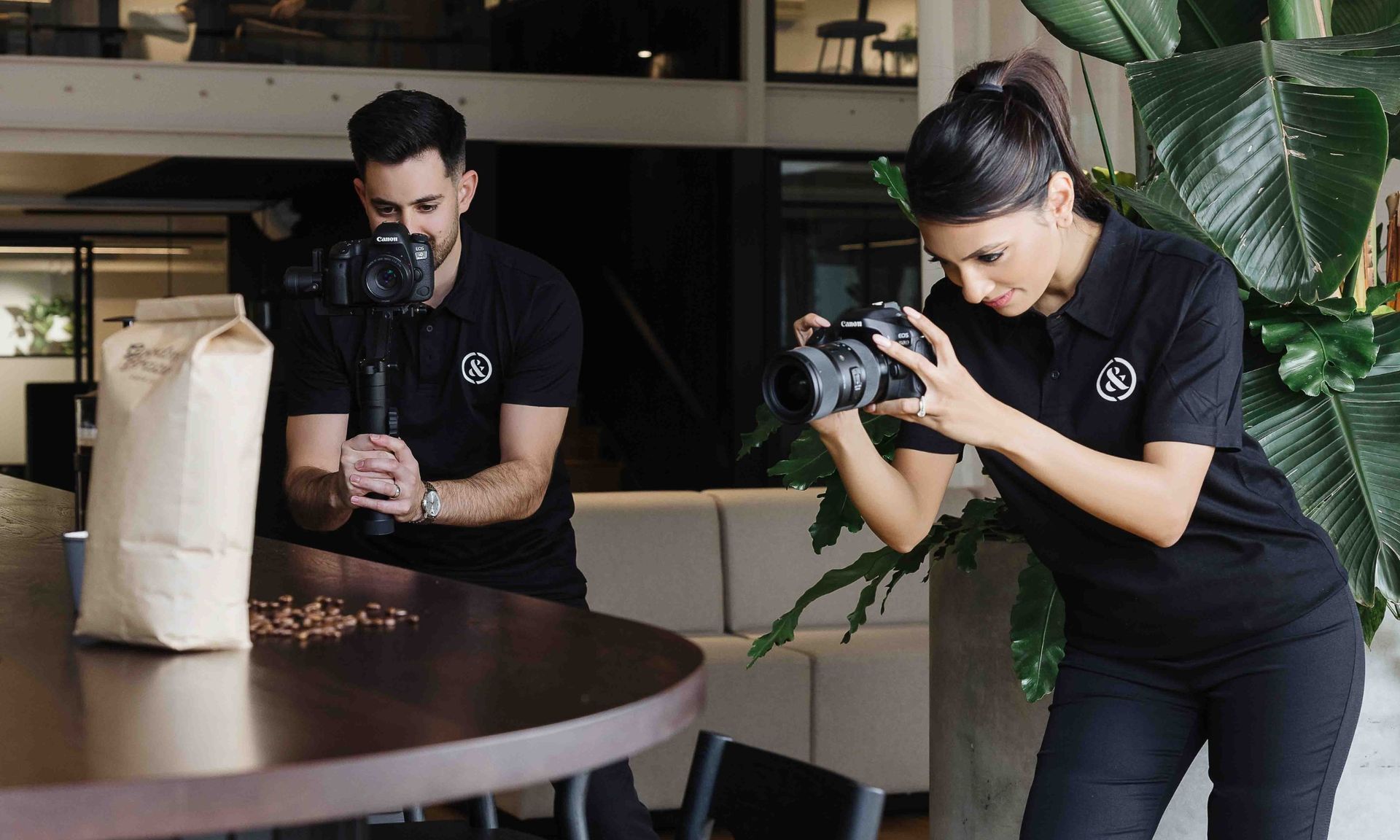Why video content gets more engagement than text or images
Why video content gets more engagement than text or images
If your content isn’t getting clicks, comments, or conversions, the problem might not be what you’re saying, but how you’re delivering it. Video content consistently outperforms text and static images when it comes to holding attention, building trust, and inspiring action. For small and medium-sized businesses looking to grow, that matters. In this article, we’ll explore why video marketing is such a powerful tool for engagement and how you can start using it to connect with your audience more effectively.
ARTICLE CONTENTS
What this article will cover
This article will break down exactly why video content outperforms other formats and how you can start using it more effectively. From the science behind engagement to the types of videos that work best for small businesses.
The psychology behind video engagement
Learn how your audience’s brain responds to video content and why visual storytelling helps people remember and connect with your message.
Performance statistics
Explore real-world data showing how video drives higher engagement, click-through rates and conversions across multiple platforms
Why audiences trust video more
Understand how video builds credibility by showing real people, tone of voice and body language, helping your audience feel more connected.
Most effective video content for SMBs
See which types of videos work best such as testimonials and service explainers, and where to use them for the biggest impact.
The psychology behind video engagement
Trust and attention aren’t earned just through what you say but how it’s delivered. Humans are naturally drawn to visuals, and our brains process them incredibly quickly. In fact, studies show that the brain can recognise an image in as little as 13 milliseconds, making visual content far more efficient for grabbing attention than text (The Information Lab, 2021).
But it’s not just about speed. Video also activates more of the brain than static content. By combining visuals, sound, movement, and emotion, it creates a multi-sensory experience that creates a richer, more memorable experience. e. Watching a testimonial or behind-the-scenes clip lets your audience connect more deeply, not just by listening to the message, but by observing facial expressions, tone of voice and body language.
This emotional layer is key. People make decisions based on emotion just as much as logic, especially when choosing who to work with or buy from. A well-crafted video can build trust in seconds by showing real faces, genuine reactions, and human stories - all things that are difficult to convey through plain text or images.
For business owners, this means video isn’t just engaging, it’s persuasive. It gives your message the best possible chance of landing well and sticking around.
How video outperforms text and images
"Video consistently delivers the highest return on investment across all social media formats. "
It’s one thing to say video is engaging - but the numbers make the case even stronger. There is marketing data showing that 87% of marketers report increased sales directly linking to using video in their content strategy. Additionally, short-form video consistently delivers the highest return on investment across all social media formats (DISA, 2024).
That performance shows up across the board. On landing pages, adding a video can increase conversion rates by up to 80%. Emails with video see higher click-through rates. Social posts with video outperform static images in almost every metric: reach, comments, shares, and watch time.
What gives video this edge? It holds attention longer, giving your message more time to land. Algorithms on platforms like Facebook, Instagram, and LinkedIn reward content that keeps users engaged, meaning your videos are more likely to be seen and shared, creating a compounding effect: better visibility leads to better engagement, leading to more visibility again.
For SMBs investing in content marketing, that’s a compelling reason to prioritise video. When resources are limited, you want to invest in what delivers the most impact. The data clearly shows that video isn’t just another content option, it’s often the highest-performing one.
Why audiences trust video more
Trust is easier to build when your audience can see the faces and hear the voices behind a business. While text can explain and images can showcase, video combines both with tone of voice, facial expressions, and body language. These subtle, human cues help audiences feel like they’re getting to know the person or business behind the screen.
That’s particularly important for service-based SMBs. Whether you’re a builder, consultant, or physiotherapist, your clients want to feel confident that they’re dealing with real people who understand their needs. A written testimonial or polished brochure might help, but a video testimonial featuring a happy customer speaking naturally carries more weight. It feels real and more believable.
This level of transparency goes a long way. Seeing someone speak on camera, even casually, gives viewers a sense of authenticity that’s hard to replicate with other formats. They can hear the tone, observe the setting, and get a better feel for your business culture - all of which contribute to trust and credibility.
It’s also worth noting that audiences have become more selective. With so much content competing for their attention, people are drawn to content that feels real and personal. Video helps you cut through the noise by showing who you are, not just telling people what you do.
Most effective video content for SMBs
Different types of video content serve different purposes, and knowing what performs best (and where to use it) can make all the difference. For small and medium-sized businesses, the most effective videos tend to fall into a few key categories: testimonials, service explainers, team introductions, and behind-the-scenes content.
Testimonials
Testimonial videos help build social proof. When potential customers hear from others who’ve had a positive experience, it reduces uncertainty and builds trust. These are especially useful on landing pages or service pages where decision-making happens.
Service explainers
Service explainers allow you to walk your audience through what you offer, how it works, and what to expect. A short, scripted video can quickly answer questions that would otherwise take paragraphs of text. These work well on websites as well as social feeds.
Team & behind-the-scenes
Team and behind-the-scenes videos showcase the people behind the business. Whether it’s a quick intro from the founder or a day-in-the-life of your team members, these formats help humanise your brand and make it more relatable.
Sharing your videos
When it comes to distribution, the platform matters. Video marketing isn’t just about visibility, it’s about using the right format to reach the right audience in the right place (Park University).
Instagram & Facebook
These platforms are ideal for short-form, casual content, especially Stories and Reels that offer a quick, engaging snapshot.
Youtube
YouTube works well for longer-form content, tutorials, or more detailed brand storytelling.
LinkedIn
This platform is better suited to professional, insight-driven videos like thought leadership or business updates.
Your website
Thid is still one of the most valuable places to host video, particularly on high-intent pages where video can support conversions.
For tips on where and how to share your videos effectively, read our article on sharing videos for the maximum reach.
How Clarke & Clarke help SMBs get results through video
Creating a video is one thing, and making sure it delivers real results is another. That’s where Clarke & Clarke can help. We work with small and medium-sized businesses across Australia & New Zealand to turn video into a strategic marketing tool, not just a piece of content.
It starts with understanding your audience and your goals. Whether you need a series of social media videos to build awareness, a homepage explainer to improve conversions, or client testimonials to build trust, we’ll help you choose the right approach and format. Our team manages everything from scripting and filming to editing and publishing, making the entire process easy and aligned with your broader marketing strategy.
Because we offer video as part of a full digital marketing service, your content doesn’t sit in isolation. We can integrate your videos into SEO-optimised blogs, landing pages, email campaigns, and social media ads - all with a focus on engagement and conversion.
Most importantly, you won’t be left wondering if it’s working. Every video campaign we deliver is backed by tracking, insights, and clear performance data, so you know exactly what’s driving engagement and where to focus next to continually drive your marketing and business performance.
Want to turn video into a growth tool for your business?
Get in touch with Clarke & Clarke today.
Conclusion
Video content continues to outperform other formats for a reason. It’s faster to process, more emotionally engaging, and far better at building trust with potential customers. For small and medium-sized businesses, that can make a real difference, especially when marketing budgets need to work harder.
From the way people absorb information to how platforms prioritise content, the evidence points to video as a high-impact tool that deserves a place in your marketing strategy. Whether you're aiming to increase leads, improve conversions, or simply connect with your audience in a more meaningful way, video can help you get there.
Frequently asked questions
If you're thinking about using video marketing but still have a few questions, you're not alone. Here are some quick answers to common things small business owners want to know when getting started with video content.
Does video marketing actually work for small businesses?
Yes, especially when it’s part of a clear strategy. Video grabs attention quickly and encourages action, but it works best when aligned with your business goals and audience needs.
Which platforms are best for sharing videos?
Learn moreIt depends on your audience. Instagram and Facebook are great for short, casual content. YouTube works for longer videos. LinkedIn is ideal for professional updates.
Why does video content get more engagement than text or images?
Video activates more senses- sight, sound, emotion, which helps people absorb and remember your message. It also feels more personal, which makes audiences more likely to watch, react or share.
What kind of videos are most engaging?
Authentic, focused videos tend to perform best. Think customer testimonials, short explainers, or even behind-the-scenes clips that show your business in action.
How can I tell if people are engaging with my videos?
Engagement metrics include watch time, likes, comments, shares, and click-throughs. A high view count is great, but real engagement shows when people interact or take action.





